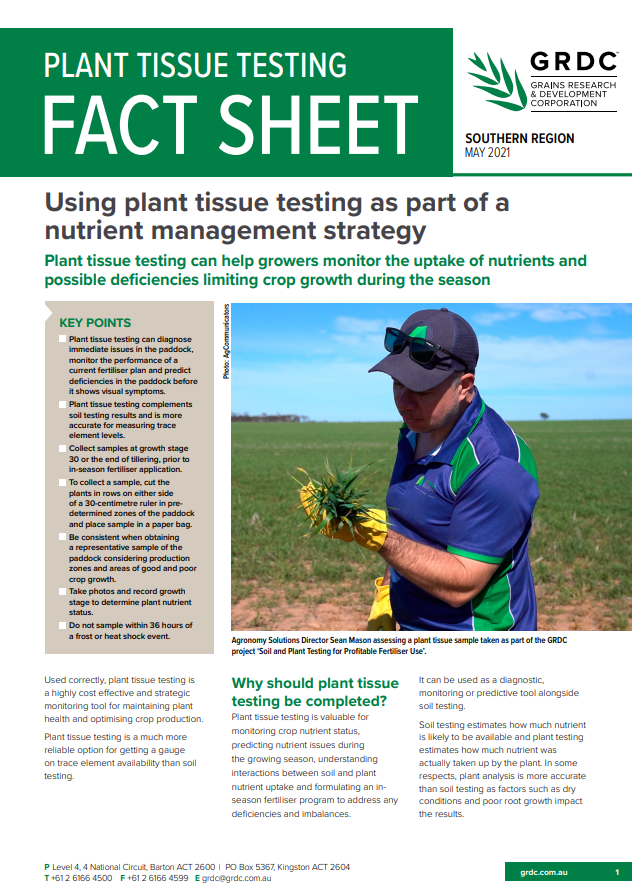Plant tissue testing fact sheet
Plant tissue testing fact sheet
Published: 22 May 2021
Key points
- Plant tissue testing can diagnose immediate issues in the paddock, monitor the performance of a current fertiliser plan and predict deficiencies in the paddock before it shows visual symptoms.
- Plant tissue testing complements soil testing results and is more accurate for measuring trace element levels.
- Collect samples at growth stage 30 or the end of tillering, prior to in-season fertiliser application.
- To collect a sample, cut the plants in rows on either side of a 30-centimetre ruler in predetermined zones of the paddock and place sample in a paper bag.
- Be consistent when obtaining a representative sample of the paddock considering production zones and areas of good and poor crop growth.
- Take photos and record growth stage to determine plant nutrient status.
- Do not sample within 36 hours of a frost or heat shock event
Using plant tissue testing as part of a nutrient management strategy. Plant tissue testing can help growers monitor the uptake of nutrients and possible deficiencies limiting crop growth during the season.
Used correctly, plant tissue testing is a highly cost effective and strategic monitoring tool for maintaining plant health and optimising crop production. Plant tissue testing is a much more reliable option for getting a gauge on trace element availability than soil testing.
Download PDF
Region: South
GRDC Project Code: ASO1805-001RTX,

